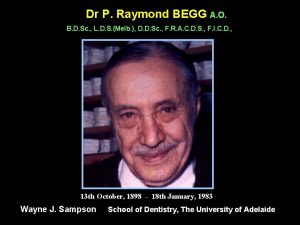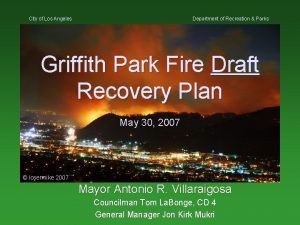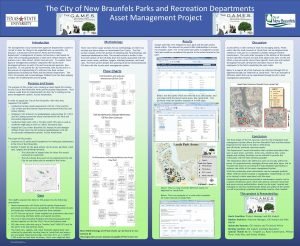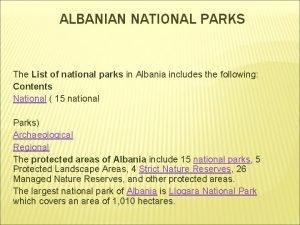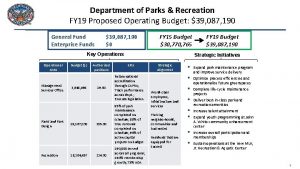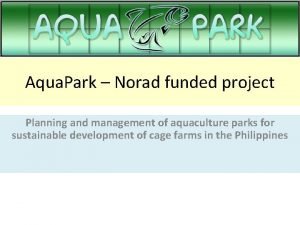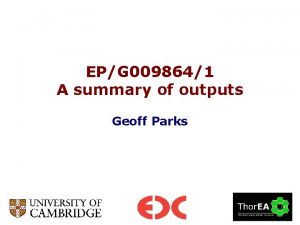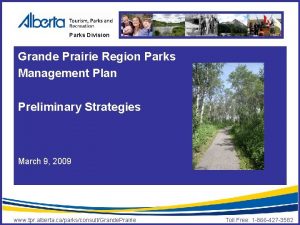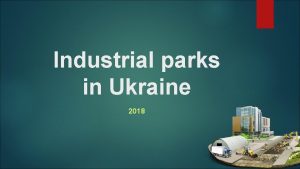D J Coates G T Parks Department of


































- Slides: 34

D J Coates, G T Parks Department of Engineering, University of Cambridge, UK Actinide Breeding in a Thermal Spectrum ADSR Thor. EA Workshop Department of Engineering, University of Cambridge 12 th July 2010

The Basis for Fast Reactors Of the six future reactor concepts being developed under the Generation IV International Forum four operate in the fast neutron spectrum Is it possible to have a thermal (closed cycle) breeder reactor? Are critical and ADS reactors the same in this respect ? Fast breeder reactors were first proposed as a means of plutonium production They were later reconsidered for plutonium destruction Destruction of actinide waste or a closed fuel (breeding) cycle or both? What benefits can the addition of an accelerator bring ? We shall consider breeding and burning separately

Contents: 1 Thermal Model • Brief description of the model used 2 Thermal flux Spectrum • What is a thermal flux spectrum distribution 3 Validation of the Thermal Model • Comparison of the model predictions with actual PWR operating results 4 Thermal Breeder ADSR • Using the model to examine the constraints affecting thermal breeder reactors

1 Thermal model

49 Nuclide Model 253 Es A simple “lumped” homogenous reactor model using averaged neutron crosssections and ignoring spatial effects is adopted 249 Cf 250 Cf 249 Bk 250 Bk 251 Cf 242 Am 242 Cm 241 Am M 242 Am 241 Pu 230 Th 242 Pu 243 Cm 244 Cm 243 Am 244 Am 243 Pu 244 Pu 231 U 232 U 233 U 231 Pa 232 Pa 233 Pa 231 Th 232 Th 233 Th 245 Cm 246 Cm 247 Cm 248 Cm 249 Cm 245 Am 245 Pu 234 U 235 U 236 U 238 Pu 239 Pu 237 Np 238 Np 239 Np 237 U 238 U 239 U 240 Pu 252 Cf 253 Cf

Mechanisms Governing Nuclide Evolution • 49 equations are created for the 49 nuclides in the model • Fourth order Runge-Kutta numerical integration applied • Use thermal spectrum effective one-group thermal cross-sections • Pu 240 Self shielding effects require continuous calculation of the crosssection as a function of burn-up

2 Thermal Flux Spectrum

Reactor Neutron Flux Distribution The fast spectrum characteristics are not determined from the presence of fast neutrons, but rather as a result of the absence of neutrons at thermal energies The small fast cross-sections are insignificant in their influence on the total thermal cross-sections The presence of the fast flux component dilutes thermal cross –sections relative to the total flux Chart taken from T. Iwasaki, N. Hirakawa, 1995

Neutron Capture Cross-sections Magnified showing 0. 5(b) vertical divisions Cross-sections taken from T. Iwasaki, N. Hirakawa, 1995

Neutron Fission Cross-sections Magnified showing 0. 5(b) vertical divisions Cross-sections taken from T. Iwasaki, N. Hirakawa, 1995

3 Model Validation

Comparison with Takahama-3 PWR (uranium)

Comparison with Takahama-3 PWR (plutonium)

Comparison with Takahama-3 PWR (americium)

Comparison with Takahama-3 PWR (curium)

Comparison with Takahama-3 PWR (curium)

Comparison with Obrigheim PWR (Am 241)

Comparison with Obrigheim PWR (Cm 242)

Comparison with Obrigheim PWR (Cm 244)

Comparison with Obrigheim PWR (Pu 238)

4 Thermal Breeding

Thorium and UO 2 Breeding Reactions 232 Th 238 U 233 Th 233 Pa 239 U 239 Np 233 U 239 Pu

Power Contribution of Selected Nuclides in a PWR As the U 235 contribution falls away the Pu 239 and Pu 241 increase to provide the major contributions to the total power

Neutron Economy in a 3. 4% 235 U PWR As burn-up progresses the fission products capture an increasing fraction of the neutron population There must be a surplus of neutrons to allow for losses within the system

The Accelerator Contribution to the Neutron Balance By diverting a fraction of the power to drive an accelerator an extended burn-up can be achieved

Neutron Economy in a Fast UO 2 Reactor The fast spectrum produces a large surplus of neutrons There is no useful role for an accelerator as a boost to the neutron balance

The Thermal Thorium System An improved neutron economy can be achieved by using a Thorium fuel platform A fissile “starter” will be necessary to maintain operation over the early operating period

Plutonium Enriched Thermal Thorium Reactor The use of a plutonium “starter” produces an initial boost to the neutron economy but ultimately falls below that of a pure thorium fuel platform

Actinide Evolution Pathways The opportunities for fission before transformation into plutonium are far greater when starting from Th 232 than from U 238 Enrichment with heavy actinides by-passes the fission opportunities and increases the proportion of heavy actinides

Neutron Absorption by Heavy Actinides The 12% plutonium enrichment results in a much greater level of neutron absorption in the heavy actinides

U 233 Enriched Thermal Thorium Reactor Using a U 233 “starter” the extended neutron capture pathway to the heavy actinides is maintained and neutron economy maximised

Accelerator Contribution to Enhanced Neutron Balance An enhanced neutron balance can be achieved by diverting a fraction of the power to drive an accelerator

Conclusions • A closed thermal fuel cycle operating from a U 238 fuel platform is not a realistic prospect with or without an accelerator • The thermal thorium fuel system has significant advantages in terms of neutron economy over that of a thermal U 238 fuel system • Accelerators can provide a boost to the neutron population to assist in creating a favourable neutron economy • The size and quantity of the accelerators required to make a significant contribution to the neutron population may prove to be prohibitive in terms of cost and practicality • The use of U 233 “starter” in a thermal thorium breeder maintains the positive benefits in terms of neutron economy of the thorium platform • Very good neutron economy can be achieved by using fast reactor systems with both Thorium and U 238 fuel platforms

The End
 Edgewise begg appliance
Edgewise begg appliance Vierkante meter
Vierkante meter City of los angeles department of recreation and parks
City of los angeles department of recreation and parks Cupertino parks and rec
Cupertino parks and rec Culver city parks and recreation after school program
Culver city parks and recreation after school program Parks and recreation vision statement examples
Parks and recreation vision statement examples Rosa parks bus boycott
Rosa parks bus boycott New braunfels parks and recreation
New braunfels parks and recreation Nevada state parks map
Nevada state parks map Rosa parks community school
Rosa parks community school Rosa parks 5 paragraph essay
Rosa parks 5 paragraph essay Amusement park rides physics
Amusement park rides physics Miami-dade county parks and recreation staff
Miami-dade county parks and recreation staff National parks in albania
National parks in albania Wakulla county recreation department
Wakulla county recreation department Carlson center fairbanks events
Carlson center fairbanks events Parks and recreation organizational chart
Parks and recreation organizational chart Aqua project management
Aqua project management Misty parks
Misty parks Amanda goodheart parks
Amanda goodheart parks Capture vis
Capture vis Geoff parks
Geoff parks Rosa parks mother
Rosa parks mother Concession rhetorical definition
Concession rhetorical definition Pan parks
Pan parks National parks of greece
National parks of greece Industrial park master plan pdf
Industrial park master plan pdf Rosa parks
Rosa parks Park hazard response curve
Park hazard response curve One software technology park
One software technology park Jonah parks
Jonah parks City of long beach parks and recreation
City of long beach parks and recreation Growth mindset values
Growth mindset values Clallam county parks
Clallam county parks Rosa parks case study
Rosa parks case study
